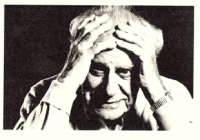Popper's Three Worlds
From Geography
Karl Popper introduced his 'three worlds' in 1978 as a way of looking at reality. When investigating Social action, Popper stated, we should not only look at the subjective world of the individual but also take into account the physical world in which the individual lives and the social world in which he/she participates. So Popper distinguishes three worlds:
1. The physical world, which contains non living physical objects, living things and biological objects.
2. The subjective world (mental or psychological world) which is the world of feelings, thoughts, perceptions and observations.
3. The social world, which is the world of products of the human mind, from maths to language, from engineering to art.
The link between world 1 and 2 is in the interaction of the mind and the physical world. This is Poppers alternative to the Cartesian dualism of the Res Cognita and Res existensa.
The interaction between world 2 and 3 is in processes such as learning or the development of scientific theories.
The link between world 1 and 3 can be seen in things like art or engineering which have a physical presence but a social meaning.
References
- Popper's Three Worlds. (2011). Vinddatum 8 oktober 2011, op Wikipedia, op http://en.wikipedia.org/wiki/Popper's_three_worlds
- Popper, K. (1978). Three Worlds. Vinddatum 8 oktober 2011, op http://www.bengin.net/jbc/dokumente/guteDenker/popper80%20on%20human%20values.pdf
Contributors
- Page created by Judith Nijenhuis
- Page edited by Koen Molenaar
- Page edited by Lars-Olof Haverkort --LarsHaverkort 23:28, 16 October 2012 (CEST)
- Picture added and (minor) editing by Isis Boot - --IsisBoot 20:54, 24 October 2012 (CEST)
